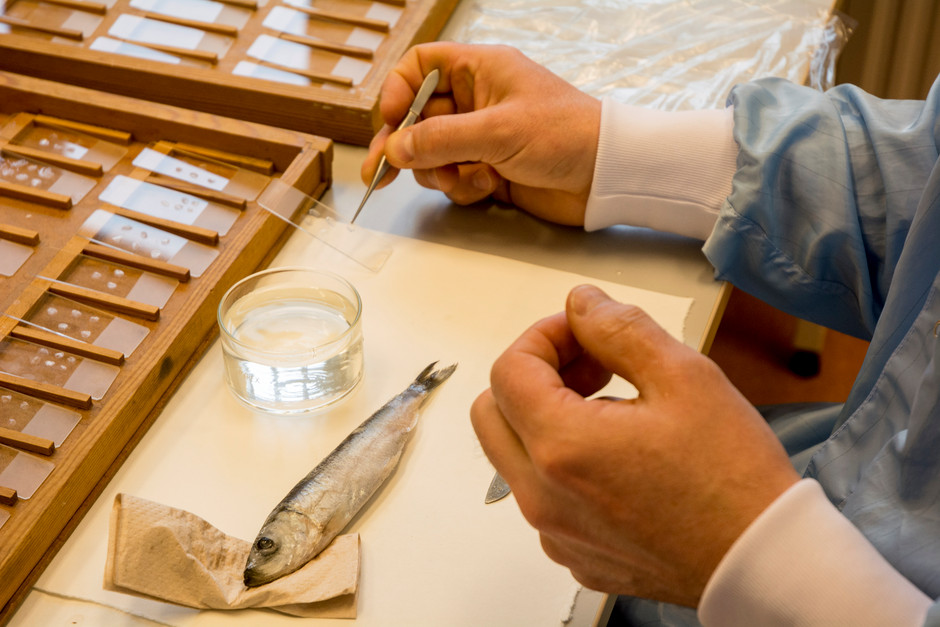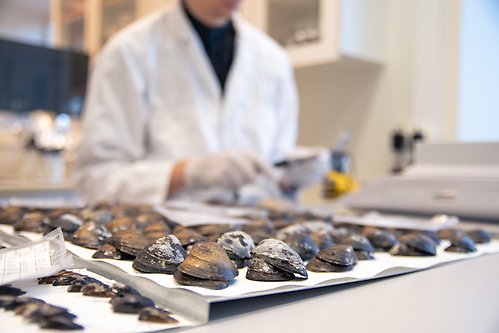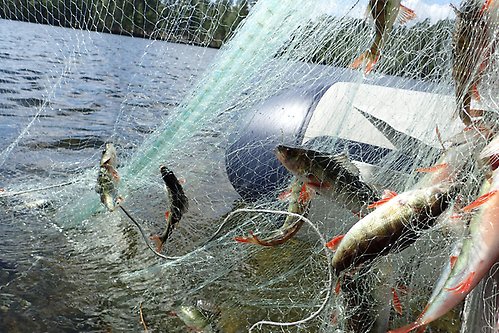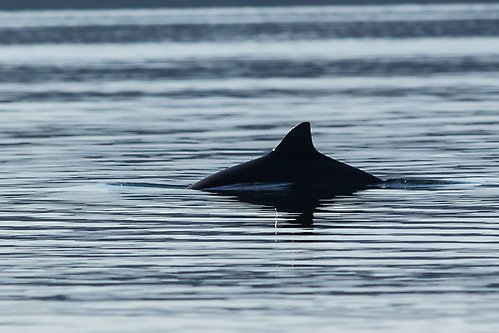The program
The purpose of the National Monitoring Program for Contaminants in Marine Biota (program area Kust och Hav (Coast and Sea) External link.) is to monitor contaminants in biota in Sweden's marine environment. The contaminant database goes back to 1968 and contains more than 100 different contaminants.
External link.) is to monitor contaminants in biota in Sweden's marine environment. The contaminant database goes back to 1968 and contains more than 100 different contaminants.
Each year, biota in the form of fish, mussels and bird eggs are collected from 27 sites along the Swedish coast and their concentration of metals and organic contaminants are determined. The program covers sites in the Gulf of Bothnia, the Baltic Proper, Kattegat and Skagerrak and focuses on four fish species (herring, perch, cod, eelpout), one mussel species (blue mussel) and three birds species (guillemot, oystercatcher and tern). Collected specimen are prepared at the museum and send for analysis for a range of metals and organic contaminants and/or to be stored in the Swedish Environmental Specimen bank.
A main purpose of the monitoring program is to facilitate time series studies of environmental contaminants to understand the development of background concentrations. Other purposes are to understand geographical differences and differences between species. The contaminant data can also be used as reference values by regional and local governments when they evaluate measurements from possible contaminated sites. The results from the monitoring program is published in an annual report External link.. Data are also used in joint international assessments for example within HELCOM
External link.. Data are also used in joint international assessments for example within HELCOM External link. and OSPAR
External link. and OSPAR External link.. Samples collected and stored in the Swedish Environmental Specimen bank can at a later time be used to identify the historic presence of new environmental contaminants using retrospective analysis.
External link.. Samples collected and stored in the Swedish Environmental Specimen bank can at a later time be used to identify the historic presence of new environmental contaminants using retrospective analysis.
The results of the program are used to follow up the Swedish environmental quality objective of a Non-Toxic Environment (Giftfri miljö) External link. and A Balanced Sea and a Living Coast (Hav i balans samt levande kust och skärgård
External link. and A Balanced Sea and a Living Coast (Hav i balans samt levande kust och skärgård External link.). The data is also reported to the database at ICES
External link.). The data is also reported to the database at ICES External link. and used for international reporting under the Marine Strategy Framework Directive
External link. and used for international reporting under the Marine Strategy Framework Directive  External link.and the Water Framework Directive
External link.and the Water Framework Directive External link..
External link..







